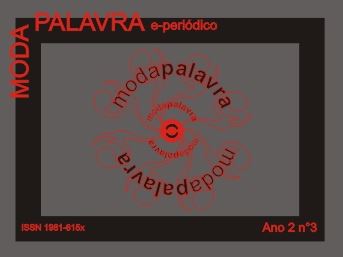Disability, Fashion Design and social integration
DOI:
https://doi.org/10.5965/1982615x02032009071Keywords:
Fashion Design, Disability, Social IntegrationAbstract
This study aims to investigate solutions for the difficulties related to clothing design faced by the disable, considering the importance of normative garments for the social integration of such consumers. The secondary research is literature review and the primary research, qualitative, is a unique case study and used the interview as a way of collecting data. A unique case study implies necessarily a limited view. The results show that, for some specific disabilities, it is possible to wear clothes which are created for the non disable, as long as some fashion design resources are considered on the detriment of others. The original contribution is the search of solutions suitable for both the disable and non disable, diminishing, in this way, the differences related to clothes which may interfere in the social integration of the non disable.
Downloads
References
ALVES, S. e BALL, C. An Innovative Approach to Clothing Design for the Wheelchair User, XXI Congresso Nacional de Técnicos Têxteis, Natal, RN, 2004
ALVES, S. Planejamento de Roupas Para Pessoas Portadoras de Desabilidade Fisica, 3° Congresso Internacional de Pesquisa em Design, Rio de Janeiro, RJ, 2005
CHRISTMAN , L. and BRANSON, D. ‘Influence of physical disability and dress of female job applicants of interviewers’ in Clothing and Textiles Research Journal, 8 (3) 1990
DAVIS, M. L. Visual design in dress, New Jersey, Prentice Hall, Inc.,1987 EBERLE, H. at al Clothing technology…from fibre to fashion, (2nd English ed) Berlin, Verlag Europa – Lehrmittel, 1999
FRINGS, G. Fashion from concept to consumer (3rd ed.) New York, Prentice Hall, 1991
GOLDSWORTHY, M. Clothes for disabled people, London, B. T. Batsford Ltd.,1981
HOFFMAN, A. Clothing for the handicapped, the aged, and other people with special needs, Illinois, Charles C. Thomas Publisher, 1979
KAISER, S. The social psychology of clothing – Symbolic Appearances in Context, (2nd ed.) New York, Macmillan Publishing Company, 1990
MACARTNEY, P. Clothes sense for handicapped adults of all ages, London, The Disabled Living Foundation, 1973
MCKANIEL; J. Physical disability and human behaviour (2nd ed) Colorado, USA, Pergamon Press, 1976
MIRANDA. A. P. Consumo de marcas de moda: aspectos funcionais e simbólicos, em dObras, Estação das Letras e Cores, 2008
MURRAY, M. Changing styles in fashion – who, what, why, USA, Fairchild Publications,1989
RYDER, M. ‘The functional history of clothing – 2’, in Textile Magazine, The Textile Institute International Manchester, Inglaterra, 04/2000
THORNTON, N. Fashion for disabled people, London, B.T. Batsford Ltd.,1990
VEBLEN, T. Theory of the leisure class: an economic study of institutions, (1st ed. Reprinted) London, Allen and Unwin !912
WATKINS, S. Clothes the portable environment (2nd ed.) Iowa, USA, Iowa State University Press, 1995
http://www.partes.com.br/noticia.asp?id=683, acesso em 31 de agosto de 2008.
Downloads
Published
How to Cite
Issue
Section
License
Copyright (c) 2016 Sheila Gies

This work is licensed under a Creative Commons Attribution-NonCommercial 4.0 International License.
When submitting an article for publication in ModaPalavra e-periodico, the author (s) agree (s) with the following terms:
- Authors maintain the copyright in their manuscripts and grant the journal the right of first publication, with work simultaneously licensed under the Creative Commons Attribution-NonCommercial 4.0 International, which allows sharing the work with the acknowledgment of authorship and the initial publication in the journal without payment ;
- Authors may use the same results in other publications after the first publication, provided that they indicate ModaPalavra e-journal as the original publication medium;
- Authors are authorized to take additional contracts, separately, only after the original publication in ModaPalavra e-journal, provided they indicate ModaPalavra e-journal as the original publication medium;
- Authors are allowed and encouraged to publish and distribute their work online (eg in institutional repositories or on their personal page), only after the editorial process and the first publication, provided they indicate ModaPalavra e-journal as the original publication medium;
- To indicate ModaPalavra e-journal as the original publication medium, authors should use the following text template: "This article was originally published by ModaPalavra e-periodical, under a CC BY NC license, in its volume [insert volume] number [insert number] in the year of [insert year], and can be accessed at: http://www.revistas.udesc.br/index.php/modapalavra/ ";
- The opinions expressed in the articles are the author’s sole responsibility, not necessarily reflecting the journal’s opinion. The publication of any material that is owned and held in copyright by a third party, including – but not limited to - articles, photos or drawings was previously authorized by their representatives to be published in ModaPalavra e-journal.









